The Castle of Luc, a Remnant of a Feudal Past |
The castle of Luc is an imposing relic from the feudal era. Perched on a rocky spur, it overlooks the landscape of the high Allier valley, offering an exceptional panorama of the Ardèche and Lozère mountains. Its history is closely linked to the powerful barony of Luc, of which it was the seat for centuries. Built from the 12th century, it played a strategic role in regional conflicts, particularly during the Wars of Religion, when it was partially dismantled. Today, although in ruins, the site retains much of its enclosure, its towers, and its keep, showcasing its massive medieval architecture.
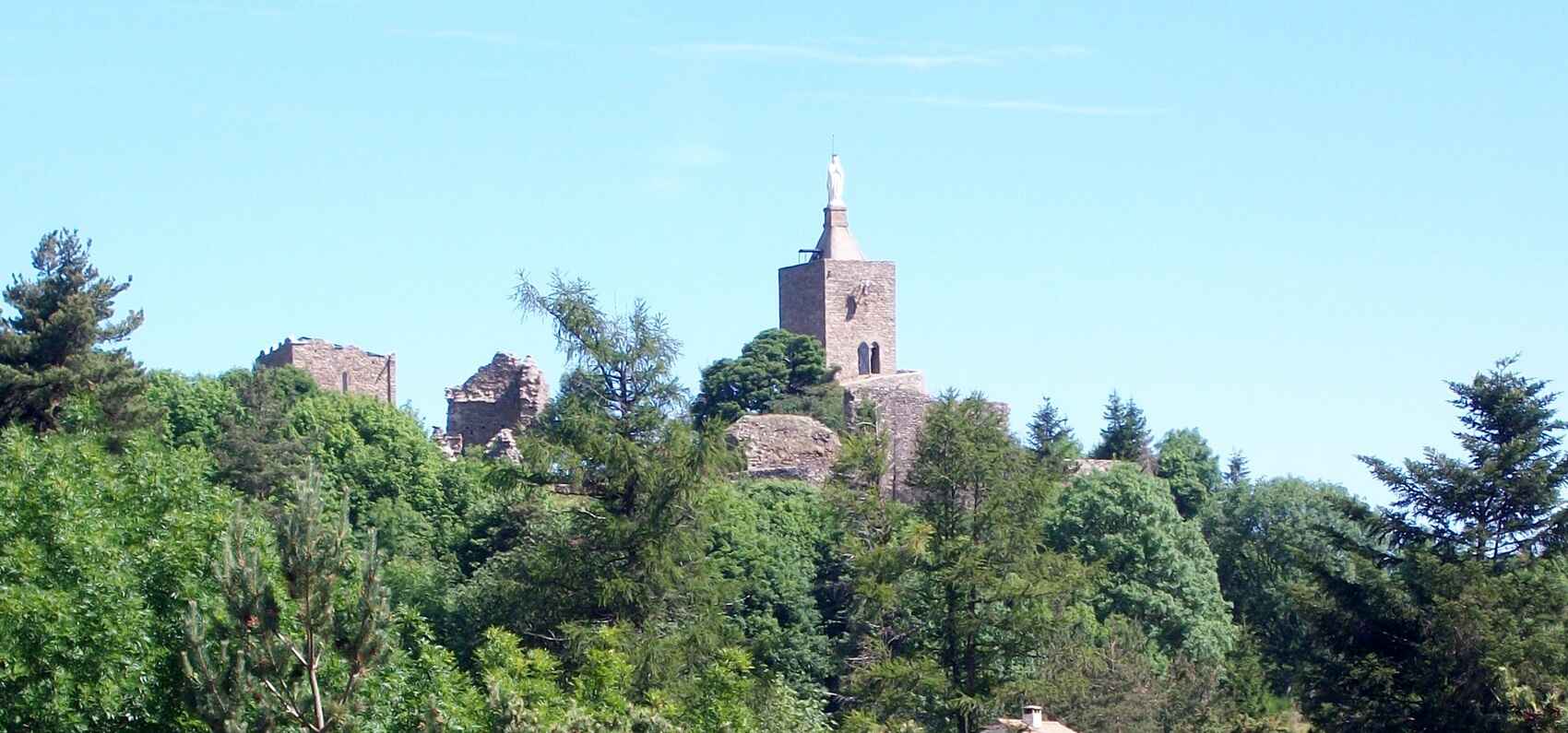
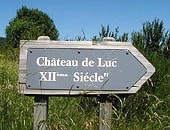 The Castle of Luc, a remnant of a feudal past
The Castle of Luc, a remnant of a feudal past
Perched on a rocky spur overlooking the Allier valley, the castle stood proudly in the landscape of Lozère. It seemed to defy time, which had nevertheless left its marks on its walls and towers. This castle, once a witness to the tumultuous history of Gévaudan, still held the secrets of its former lords. An imposing fortress whose ruins still testify to its past grandeur, it consisted of a square keep surrounded by several towers and curtain walls. The main building of the castle, rectangular in shape, was adorned with a herringbone pattern, a typical motif of Romanesque art. The structure also included a chapel, a courtyard, a well, and underground passages.
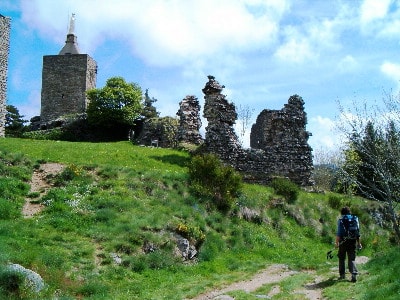 Gévaudan was an ancient French province located in the Massif Central, corresponding today to the department of Lozère. Its name derives from the Gallic people known as the Gabales, who occupied the region before the Roman conquest. It was initially an independent county, then came under the control of various noble families, such as the Barcelone, Joyeuse, and Polignac. Gévaudan experienced many significant historical events, shaping its destiny. In the Middle Ages, it was the scene of feudal wars, peasant revolts, and crusades against the Albigensians, heretics who questioned the authority of the Church.
Gévaudan was an ancient French province located in the Massif Central, corresponding today to the department of Lozère. Its name derives from the Gallic people known as the Gabales, who occupied the region before the Roman conquest. It was initially an independent county, then came under the control of various noble families, such as the Barcelone, Joyeuse, and Polignac. Gévaudan experienced many significant historical events, shaping its destiny. In the Middle Ages, it was the scene of feudal wars, peasant revolts, and crusades against the Albigensians, heretics who questioned the authority of the Church.
During the Renaissance, it was affected by the religious wars between Catholics and Protestants. In the 18th century, it became the site of mysterious attacks attributed to a ferocious beast, spreading terror and panic among the inhabitants. In the 19th century, it became the cradle of Cevennes Protestantism, resisting royal persecution. With the French Revolution, it was integrated as the department of Lozère, thus losing its designation of Gévaudan. It was a land of legends, traditions, and heritage, preserving numerous megalithic monuments, Gallo-Roman remains, fortified castles, Romanesque churches, and picturesque villages.
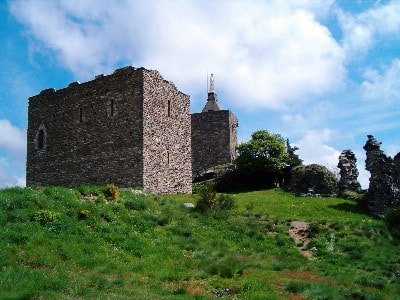 The Castle of Luc has its origins in a very ancient past, erected on a site once occupied by the Celts, near the Mercoire forest, where the mysterious Tanargue massif was hidden. Its construction spanned from the 6th to the 10th century, at a time when Gévaudan was an independent province, divided into eight baronies. Owned by the lords of Luc, allied with the powerful barons of Randon and, through them, to the House of Joyeuse, one of the most illustrious noble families of France. The lords of Luc were renowned for their bravery, piety, and sense of justice. They had the privilege of minting coins, levying taxes, administering justice, and waging war. Respected and feared by their vassals, they were also generous and protective towards the needy, the sick, and pilgrims, who found refuge and assistance in their castle.
The Castle of Luc has its origins in a very ancient past, erected on a site once occupied by the Celts, near the Mercoire forest, where the mysterious Tanargue massif was hidden. Its construction spanned from the 6th to the 10th century, at a time when Gévaudan was an independent province, divided into eight baronies. Owned by the lords of Luc, allied with the powerful barons of Randon and, through them, to the House of Joyeuse, one of the most illustrious noble families of France. The lords of Luc were renowned for their bravery, piety, and sense of justice. They had the privilege of minting coins, levying taxes, administering justice, and waging war. Respected and feared by their vassals, they were also generous and protective towards the needy, the sick, and pilgrims, who found refuge and assistance in their castle.
The Tanargue massif, with a history spanning several epochs, was the theater of numerous historical events. A strategic passage between Île-de-France and Lower Languedoc since the Middle Ages, it was frequented by various caravans of merchants, kings, crusaders, and pilgrims traveling to Saint-Gilles, an important Christian sanctuary. It was also the scene of feudal conflicts, peasant uprisings, and crusades against the Albigensians, as well as the religious wars between Catholics and Protestants. The Tanargue massif was rich with mysteries, magic, and legends, populated by fantastic creatures and haunted by spirits and curses. Its landscapes, between forests, moors, rocks, and peaks, offered breathtaking panoramas.
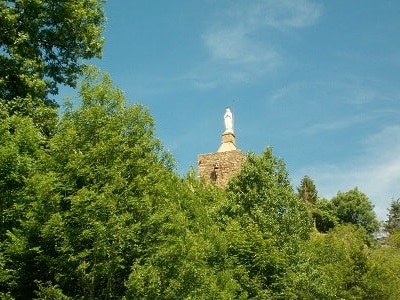 The Castle of Luc enjoyed a strategic position, located on the Régordane way (GR®700), a major route connecting Languedoc to Auvergne, frequented by merchants, pilgrims, crusaders, and kings. Moreover, being at the border between Vivarais and Gévaudan, two regions often in conflict, the castle had the mission of ensuring the defense of the territory and the protection of the inhabitants. Equipped with imposing ramparts, moats, drawbridges, and watchtowers, it was nearly impregnable. Inside, halls, rooms, kitchens, cellars, and chapels provided comfort and splendor. Decorated with tapestries, paintings, sculptures, and furniture, its walls testified to refinement and wealth. Animated by the presence of lords, ladies, knights, squires, servants, cooks, chaplains, troubadours, and minstrels, the castle was vibrant with life and joy.
The Castle of Luc enjoyed a strategic position, located on the Régordane way (GR®700), a major route connecting Languedoc to Auvergne, frequented by merchants, pilgrims, crusaders, and kings. Moreover, being at the border between Vivarais and Gévaudan, two regions often in conflict, the castle had the mission of ensuring the defense of the territory and the protection of the inhabitants. Equipped with imposing ramparts, moats, drawbridges, and watchtowers, it was nearly impregnable. Inside, halls, rooms, kitchens, cellars, and chapels provided comfort and splendor. Decorated with tapestries, paintings, sculptures, and furniture, its walls testified to refinement and wealth. Animated by the presence of lords, ladies, knights, squires, servants, cooks, chaplains, troubadours, and minstrels, the castle was vibrant with life and joy.
Charged with history, memory, and dreams, the Castle of Luc traversed periods of glory and decadence, peace and war, love and hate, faith and doubt, joy and sadness, life and death. It welcomed illustrious figures such as King Louis IX, known as Saint Louis, or the Marshal of Joyeuse, as well as more obscure personalities. It was the scene of dramatic events, such as the siege by royal troops in 1307 or the sacking by the Camisards in 1703. The Régordane Way, crossing the Massif Central from Puy-en-Velay to Saint-Gilles, also bears witness to a millennia-old history, marked by significant events and cultural and landscape diversities.
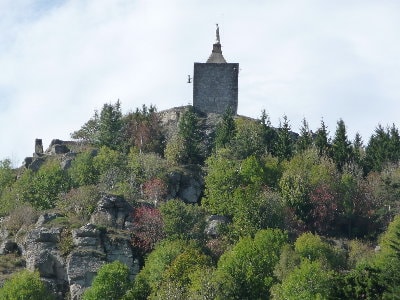 Vivarais, a historical region in the southeast of France, corresponding today to the department of Ardèche and some neighboring municipalities, takes its name from the Gallic people called the Helvii, who occupied the southern part of the region before the Roman conquest. Later integrated into the Holy Roman Empire, Vivarais was gradually attached to the Kingdom of France between the 13th and 14th centuries. Marked by numerous historical events, Vivarais was the scene of feudal wars, peasant revolts, and crusades against the Albigensians during the Middle Ages. During the Renaissance, it was affected by the religious wars between Catholics and Protestants. In the 18th century, a series of mysterious attacks attributed to a ferocious beast spread terror, resulting in over a hundred victims. In the 19th century, it became the cradle of Cevennes Protestantism, resisting royal persecution. With the French Revolution, it was integrated as the department of Lozère, thus losing its name of Vivarais.
Vivarais, a historical region in the southeast of France, corresponding today to the department of Ardèche and some neighboring municipalities, takes its name from the Gallic people called the Helvii, who occupied the southern part of the region before the Roman conquest. Later integrated into the Holy Roman Empire, Vivarais was gradually attached to the Kingdom of France between the 13th and 14th centuries. Marked by numerous historical events, Vivarais was the scene of feudal wars, peasant revolts, and crusades against the Albigensians during the Middle Ages. During the Renaissance, it was affected by the religious wars between Catholics and Protestants. In the 18th century, a series of mysterious attacks attributed to a ferocious beast spread terror, resulting in over a hundred victims. In the 19th century, it became the cradle of Cevennes Protestantism, resisting royal persecution. With the French Revolution, it was integrated as the department of Lozère, thus losing its name of Vivarais.
The Castle of Luc was the site of many decisive historical events. In 1380, during the Hundred Years' War, it was besieged by a band of mercenaries, plundering the countryside. The villagers took refuge in the castle, hoping to find safety there. But confronted with an overwhelming number and strength, their situation seemed desperate until a miracle occurred. Alerted by the sounds of battle, ten gentlemen from the neighborhood, led by three brave lords including Béraud d'Agrain des Ubas, a relative of the lords of Luc, came to the castle's aid. Together, they repelled the attackers, who fled, leaving significant losses behind. Grateful to their rescuers, the inhabitants of the castle offered them a feast as a token of gratitude.
Béraud d'Agrain des Ubas, who owned lands in Vivarais and Gévaudan, was allied with the barons of Randon and the House of Joyeuse. He inherited the properties of the cadet branch of the lords of Solignac, paying homage to the bishops of Puy for his possessions in Velay, including his fortress of Auteyrac. He had two sons, Jean and Georges, the latter becoming bishop of Orange.
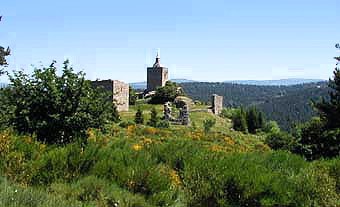 In 1562, during the religious wars between Catholics and Protestants, the Castle of Luc, loyal to the king and the Church, was threatened by Huguenots who had taken several strongholds in the region. To protect the castle, King Charles IX sent a garrison, thus ensuring its defense and contributing to the maintenance of order in the country.
In 1562, during the religious wars between Catholics and Protestants, the Castle of Luc, loyal to the king and the Church, was threatened by Huguenots who had taken several strongholds in the region. To protect the castle, King Charles IX sent a garrison, thus ensuring its defense and contributing to the maintenance of order in the country.
In 1630, under the influence of Cardinal Richelieu, minister of Louis XIII, who wished to weaken the rebellious nobility, the Castle of Luc was destroyed, its stones being used to build houses in the village. Deprived of its military function, the castle entered a long period of abandonment.
In 1878, a new life opened for the Castle of Luc, with the transformation of its keep into a chapel and the installation of a statue of the Virgin Mary on its summit. Having become a place of worship and pilgrimage, the castle regained some of its former glory.
In 1986, the Castle of Luc was officially recognized as a historic monument and listed on the inventory. Taken over by the Friends of the Castle of Luc association, a team of volunteers made it their mission to restore and promote it, thus preserving this precious witness to the feudal history of the region.
Former holiday hotel with a garden along the Allier, L'Etoile Guest House is located in La Bastide-Puylaurent between Lozere, Ardeche, and the Cevennes in the mountains of Southern France. At the crossroads of GR®7, GR®70 Stevenson Path, GR®72, GR®700 Regordane Way, GR®470 Allier River springs and gorges, GRP® Cevenol, Ardechoise Mountains, Margeride. Numerous loop trails for hiking and one-day biking excursions. Ideal for a relaxing and hiking getaway.
Copyright©etoile.fr